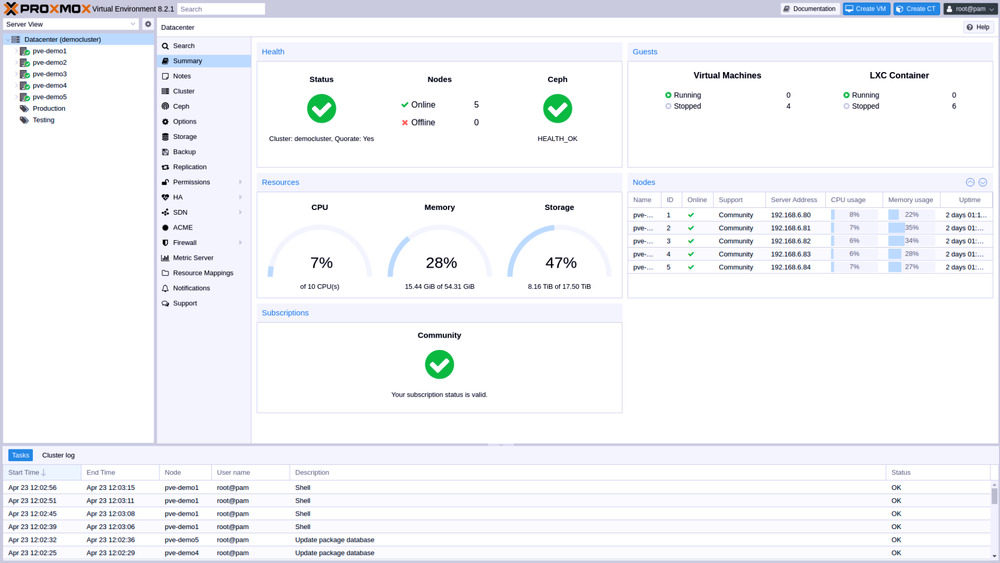One of the standout features in Proxmox VE 9.1 is its support for Open Container Initiative (OCI) images. Administrators can now easily pull these images from popular registries or upload them as templates, facilitating the creation of standardized containers through an improved deployment process that is user-friendly for both graphical and command-line interfaces.
In terms of virtual machine security, this release enhances handling of Trusted Platform Module (TPM) states for qcow2 virtual machines. This improvement allows for full VM snapshots even when virtual TPMs are active, ensuring compatibility across various storage types, including NFS, CIFS shares, and LVM setups.
Nested virtualization has also been made more accessible. Administrators can now activate specific virtualization features with a new vCPU flag in VM settings, offering more precise control over specialized guest environments.
The visibility and monitoring capabilities in the Software-Defined Networking (SDN) layer have been upgraded too. The web interface now provides detailed monitoring and reporting tools for SDN infrastructure, allowing users to easily track connected guests, review EVPN zones or fabrics, and monitor IP-VRFs and MAC-VRFs from a centralized location. This enhancement simplifies cluster-wide network troubleshooting and overall management.
Getting started with Proxmox VE 9.1 is straightforward. Users can download the ISO file for fresh installations or migrations, and the setup wizard facilitates quick bare-metal installations. Existing users can upgrade using the APT package manager.
Proxmox VE remains committed to its open-source philosophy by releasing its complete codebase under the GNU AGPLv3 license, ensuring it is Free/Libre and Open Source Software (FLOSS). For enterprises, optional professional subscription support plans are available, providing certified updates and technical assistance, which is particularly beneficial for production environments.
In summary, Proxmox VE 9.1 presents a comprehensive upgrade with enhanced container and virtual machine capabilities, improved security features, and better SDN visibility, making it a compelling choice for businesses looking to optimize their virtualization infrastructure. For more detailed information, users can visit the official announcement page.
Extended Insights
With the release of Proxmox VE 9.1, organizations can expect to see not just immediate benefits in their operational efficiency, but also long-term gains in scalability and security. The integration of OCI image support may encourage more developers to utilize containerization, fostering innovation and rapid deployment of applications. Furthermore, the enhanced security features could help mitigate risks associated with virtualization, particularly in sensitive environments.As the tech landscape evolves, Proxmox VE's continuous updates and commitment to open-source principles ensure that users can remain agile and adaptable. The combination of robust community support and professional services offers a balanced approach that caters to both small businesses and larger enterprises. The ongoing development roadmap for Proxmox also suggests that users can look forward to future enhancements that will further streamline virtualization management and bolster security protocols
Proxmox Virtual Environment 9.1 released
Proxmox Virtual Environment 9.1 has been released with several key upgrades that aim to provide businesses with more flexibility and control over their infrastructure. The updates touch on container deployment, virtual machine security, and software-defined networking, making it easier for administrators to manage their systems. Notable additions include support for Open Container Initiative (OCI) images, improved virtual machine security through TPM state handling, and enhanced visibility in the Software-Defined Networking layer with clearer monitoring tools.


